French anti-aircraft missile systems of the Crotale family
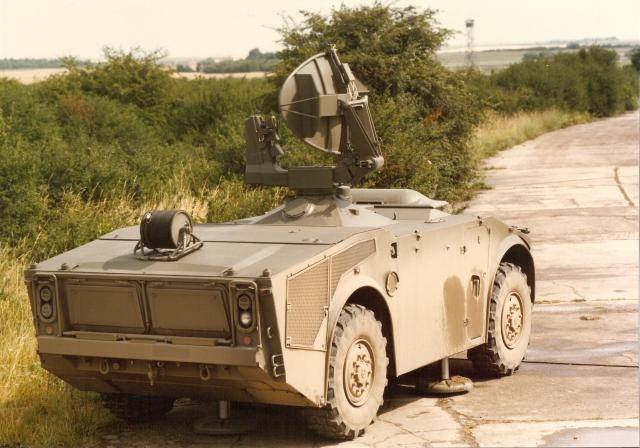
The battery control center of the Crotale air defense system of the first version. Photo Missilery.info
Half a century ago, France adopted the latest mobile anti-aircraft missile system Crotale. This technique helped to update its own air defense and make money on export contracts. In the future, the air defense system was finalized for different platforms and was repeatedly upgraded. As a result, later versions of the Crotal product are still in service with a number of foreign armies and are considered quite modern and effective air defense systems.
Promising project
The Crotale air defense system appeared thanks to the armed forces of South Africa, which recently gained independence. In 1964, the South African army issued an order to the French company Thomson-Houston (later Thomson-CSF, now Thales Group) to develop a promising air defense system. She needed a short-range mobile complex capable of effectively dealing with low-flying air targets.
The development of the project continued for several years, and at the end of the sixties the experimental complex was brought to the test. By this time, the armed forces of France became interested in the promising air defense system, and the work was carried out with some of their participation and under control.
In 1971, the tests of the complex were successfully completed, after which the Thomson-Houston company began mass production of equipment for South Africa. By the middle of the decade, South Africa had transferred several ordered batteries. This technique was adopted under the name Cactus.
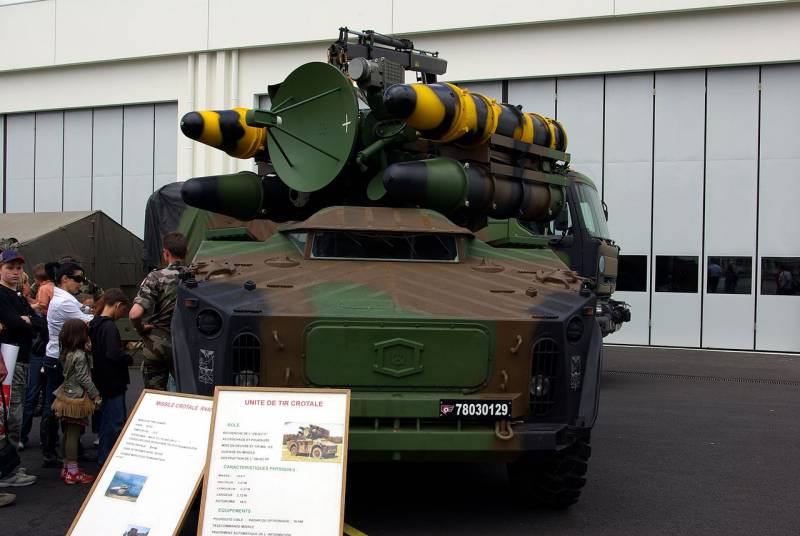
Self-propelled launcher. Photo by Wikimedia Commons
The results of the Cactus project completely satisfied the French military. Thanks to this, a new order for the production of complexes soon appeared. Already in 1972, the air defense system was adopted by the anti-aircraft units of the French Air Force under the name Crotale (“Rattlesnake”). As in the case of South Africa, by the mid-seventies, the troops received the required amount of new equipment.
In 1974, Thomson-CSF received an order from the French Navy to create a ship modification of the Crotal complex. Tests of an experimental air defense system took place in 1978, and just a few months later it was put into service. The complex was installed on several types of ships built in that period and later.
Finished sample
The product "Krotal" was a mobile short-range air defense system designed to protect troops or important objects. All means of the complex were carried out on wheeled chassis, which ensured independent movement between positions. A typical battery includes one command post with radar and controls, as well as up to three launchers.
All Crotale facilities in the original version for the French Air Force were mounted on a two-axle all-wheel drive P4R chassis. On the roof of such a machine was placed a radar antenna or a launcher with missiles. The chassis allowed the air defense system to accompany the troops on the march and quickly prepare for work on a suitable site. Deployment and connection of communication cables took several minutes. It was envisaged the possibility of using other chassis while maintaining all the principles of operation.
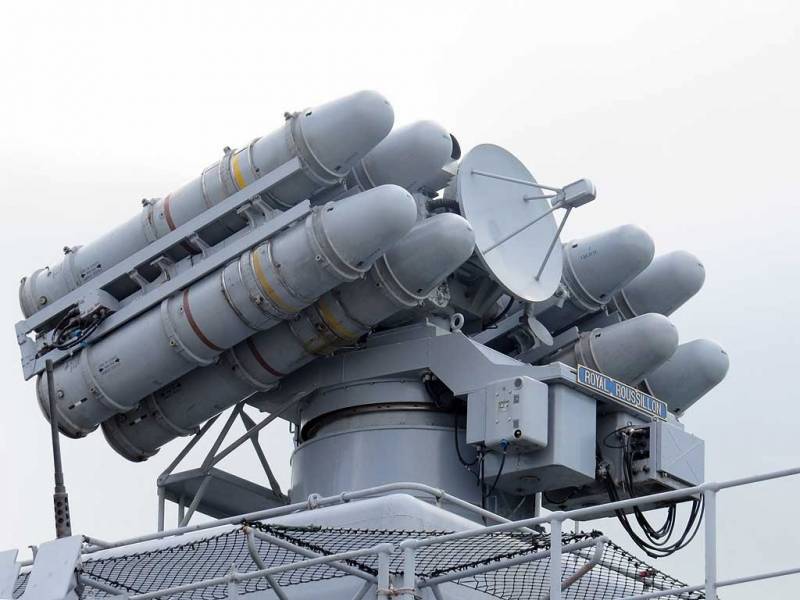
Crotale Naval ship launcher. Photo by Wikimeda Commons
The control post was originally equipped with an E-band radar of the Mirador-IV type. It allowed detecting air targets at altitudes from tens of meters to 4,5 km at distances up to 18,5 km. The station could track 30 targets at the same time and highlight the 12 most dangerous. Target designation via a wire line was issued to launchers.
The self-propelled launcher had a rotary combat module with its own radar and infrared camera, designed to track the target and guide the missile. The range of these funds is up to 17 km. Two transport-launch containers with missiles were placed on the sides of the module.
Crotale used an R440 type missile. It had a cylindrical body 2,9 m long and 150 mm in diameter. Starting weight - 100 kg. The solid propellant engine provided fast acceleration to a speed of 750 m/s and gave a range of 8-10 km. The missile received radio command guidance; command generation was carried out by automatic launcher. Warhead - high-explosive fragmentation weighing 15 kg with a proximity fuse.
As production continued, the Crotale air defense system was repeatedly improved, but without fundamental innovations. The first complexes in the basic configuration were designated as the "1000" series. Soon a version of "2000" appeared, distinguished by the presence of television surveillance equipment and a state identification system. In the 3000 series, target tracking was added using a television channel. The next option was equipped with radio systems for interfacing funds during operation. In the 5000 series, the possibility of using Mistral MANPADS missiles was studied.
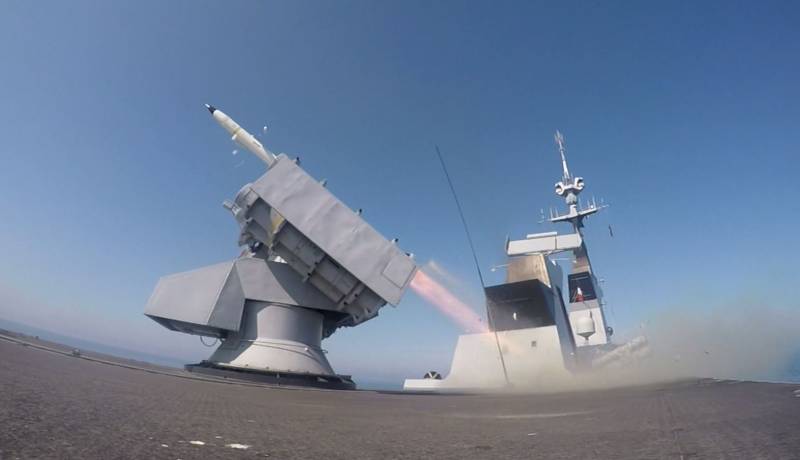
Rocket launch R440. Photo by the French Ministry of Defense
The ship-based air defense system Crotale Naval retained the main components of the land-based one, but was noticeably different from it. For installation on surface platforms, a combat module with a guidance radar, an IR camera and eight missiles was proposed. The complex was supposed to work on target designation of shipborne radar facilities, and the operator's console was located inside the ship, at a distance from the module.
New generation
In the second half of the eighties, Thomson-CSF, together with the American company LTV, developed a project for a deep modernization of the air defense system called Crotale-NG (New Generation). It was decided to use some solutions, but rework them to improve performance, as well as replace a number of key components. As a result, the self-propelled launcher has become an independent combat vehicle capable of operating without the involvement of a command post.
The Crotale-NG air defense system received a TRS2630 type target detection radar with a rotating antenna and a range of up to 20 km, height - up to 5 km. The tracking station was also replaced, with a range of up to 30 km, depending on the type of target. The optical system included a television and infrared camera with a maximum viewing range of 20 km and several viewing angles.
The launcher has an improved fire control system. She got the opportunity to simultaneously receive and process data from all radars and optical means. Due to this, the accuracy of calculating the coordinates of air targets and missile guidance has increased. Operator consoles have been updated with modern color monitors and other equipment.
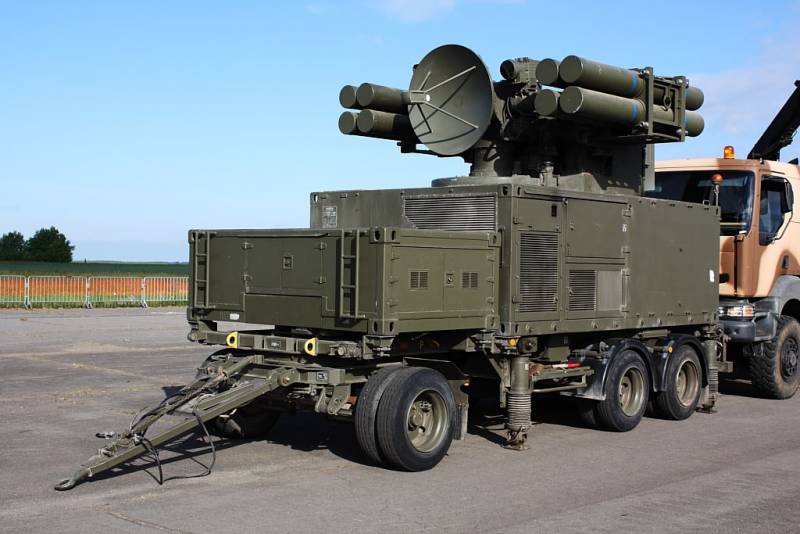
Crotale NG complex on a semi-trailer. Photo Telegram / BMPD
For the modernized Crotal, a new VT-1 rocket was developed in the United States. This product had a length of 2,3 m with a diameter of 165 mm and a mass of 73 kg. Warhead - 14-kg high-explosive fragmentation. The new solid-propellant engine made it possible to obtain a speed of more than 1200 m/s while maintaining a range of 10 km and an altitude reach of 6 km. At the same time, eight missiles were placed on the launcher at once.
In 2008, a newly modernized air defense system called Crotale Mk 3 was tested. This time, the radio-technical and optoelectronic equipment was again updated, and the missile was also finalized. In field conditions, the updated VT-1 was able to intercept a conditional target at a distance of 15 km.
Customers and operators
The French armed forces became the first and largest customer of the Crotale air defense system. First, they purchased a land-based version of the complex for the anti-aircraft units of the Air Force, and then began to re-equip the ships of the Navy. As new versions and modifications appeared, the French army updated its fleet. In total, the French armed forces received several dozen Crotal air defense systems - hundreds of pieces of equipment.
The Thomson company, having received orders from South Africa and France, brought its new development to the international arms market. The high tactical and technical characteristics of the air defense system and the interest from the two countries helped to obtain new export contracts. At the same time, some customers did not want to take the equipment in its original form.
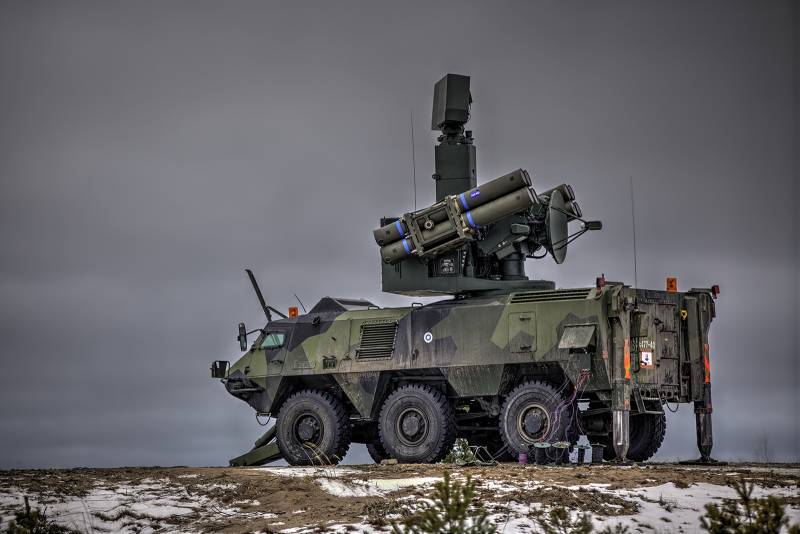
The Crotale-NG complex on the XA-180 chassis for Finland. Photo Thales Group
The first orders came from Libya and Portugal. Already in 1973-75. they were shipped the desired equipment in the required quantity. Later they signed a contract with Egypt. In the future, new orders of various sizes appeared. For example, Pakistan decided to make Crotale one of the foundations of its air defense and ordered a large number of complexes with 144 launchers.
Also in the early seventies, Thomson tried to get an order from the United States. She joined forces with Rockwell and joined one of the competitions. The French air defense system was tested at American test sites, but the Pentagon was not interested.
In 1975, the French industry received an unusual order from Saudi Arabia. This time the contract provided for the refinement of the existing complex with the replacement of the base wheeled chassis with tank AMX-30 - for unification with the equipment of the Arabian army. This modification received the designation R460 SICA and the name Shahine. In 1980, the customer adopted it.
The development of the Crotale NG project allowed the manufacturing company to receive new contracts. Such equipment was purchased by Greece, Oman, Finland, etc. As before, foreign armies acquired only a few batteries and a limited number of launchers and other means. At the same time, the configuration of air defense systems for different countries is different - customers chose the most convenient chassis and devices for them.
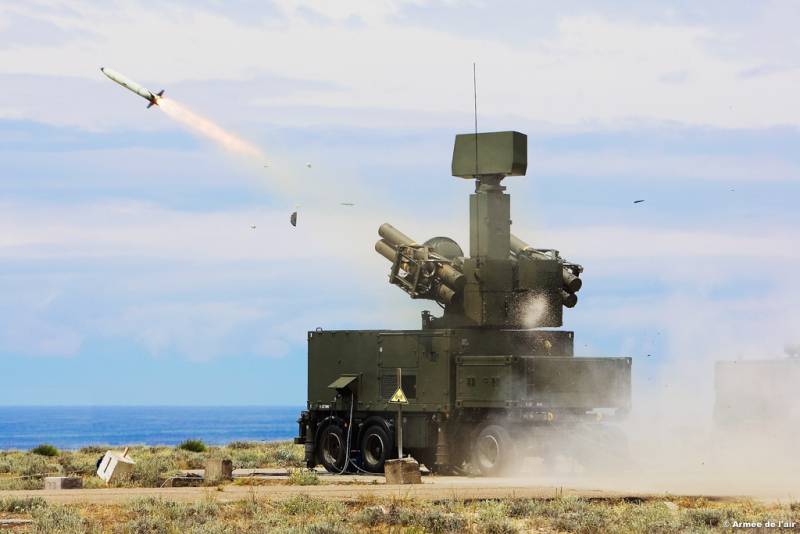
VT-1 rocket launch. Photo by the French Ministry of Defense
The last list of Crotale-NG owners was added to Ukraine. In 2023, France donated two battery packs as an aid. The equipment arrived on Ukrainian territory and allegedly took up duty. It is alleged that it shoots down air targets, but accurate information on this has not yet been received.
Half a century in service
The development of the future Crotale / Cactus air defense system began almost 60 years ago, and half a century has already passed since its adoption by the first armies. All this time, Crotal was produced in a fairly large series - customers received a total of several hundred combat vehicles. A significant part of this equipment is still in service with a dozen countries, and they do not plan to abandon it.
The reasons for such a commercial success and such a long service life are simple. At the time of its appearance, the Crotale product was a very successful model and could compete with contemporary systems. In the future, Thomson / Thales almost constantly developed the original sample and improved it in one way or another. The last modernization of this kind took place only 15 years ago - 35 years after the appearance of the basic air defense system. Accordingly, customers could always count on receiving a modern version of the air defense system.
However, even successful designs and samples become obsolete morally and physically. According to known data, the Thales Group no longer upgrades the Crotale air defense system, and the Mk 3 variant remains its newest variant so far. Apparently, the modernization potential of the Rattlesnake has been fully used, and now it is necessary to create a completely new project.
Information